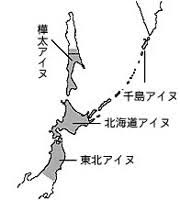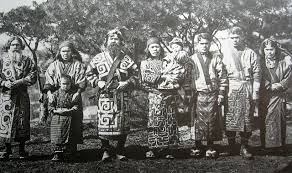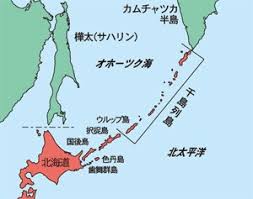Golden Kamuy provides detailed reports on the traditions and culture of the Ainu people, teaching them about their customs and beliefs. But do you know the historical background of the Ainu? They are a people with a tragic history, including forced relocation and choice of nationality due to territorial disputes between Japan and Russia. In this article, we will introduce their history, including the relationship between Japan and Russia.
Ainu history explained through Golden Kamuy
The origins of the Ainu are unclear

Source: Golden Kamuy © Noda Satoru / Shueisha, Golden Kamuy Production Committee
Although they are generally referred to as the Ainu people, there were Ainu with different cultures and beliefs in different places at the time, such as Hokkaido Ainu and Sakhalin Ainu. In the story, when Asirpa kills the seal, it is explained that there are Ainu who regard seals as kamuy (gods) and those who do not. The history of the Ainu is said to date back to the Jomon period, but in fact the detailed origins of the Ainu history are unclear. This is because there are few traces related to the Ainu, and it is said that the scope is intentionally left vague in order to clarify it more in the future as geology and archaeology develop.
Sad History of the Ainu

Source: Golden Kamuy © Noda Satoru / Shueisha, Golden Kamuy Production Committee
For many years, the Ainu were forced into assimilation by Japan, and their customs, culture, and language were eliminated. That's why Asirpa can speak Japanese, and her grandmother can only speak Ainu. Also, although they were Hokkaido Ainu who did not have surnames, they were forced to have Japanese names. That's why Asirpa has the Japanese name Kochobe Asuko. Furthermore, during the Meiji era, the Ainu were called natives and discriminated against. It was only after World War II that the government recognized the Ainu as Japanese citizens. Furthermore, because Japan, which wanted to eradicate Ainu culture, taught that Ainu could not marry other ethnic groups, intermarriage became common, and it is said that pure-blooded Ainu hardly exist today.
Understanding the history of Japan and the Ainu through Golden Kamuy

Source: Golden Kamuy © Noda Satoru / Shueisha, Golden Kamuy Production Committee
It is said that trade between Japan and the Ainu began during the Kamakura period. However, at that time, there were many minority tribes among the Ainu, and it was not until the Sengoku period that the Ainu began to trade in a large group. However, the more trade between the different cultures of Japan and the Ainu increased, the more friction there was, and the Battle of Koshamain took place in 1457. The fire was put out by the Matsumae clan at the time, but the Ainu were forced to trade unfairly for about 200 years after that. Then, in 1669, the Battle of Shakushain took place. The reason for the battle is said to be an explosion of dissatisfaction with poor business practices and working conditions. Although the conflict calmed down again, the status of the Ainu could not be improved, leading to assimilation policies.
The History of the Russo-Japanese War as Seen in Golden Kamuy
The Trigger of the Russo-Japanese War
The trigger of the Russo-Japanese War was the sovereignty of the Korean Peninsula. At the time, Japan had won the Sino-Japanese War and was given the Liaodong Peninsula in order to expand its territory into Asia. However, Japan was not the only one wanting Asian territory. Russia wanted it too. So Russia teamed up with France to force Japan to return the Liaodong Peninsula to the Qing Dynasty. Russia was a major power at the time, and Japan couldn't say no. This is what is known as the Triple Intervention. This caused a strain on Japan-Russia relations. Russia later came to control Manchuria, but with the conclusion of the Anglo-Japanese Alliance, Japan, which was aiming to acquire the Korean Peninsula, declared war on Russia.
The end of the Russo-Japanese War and Lieutenant Tsurumi's anger

Source: Golden Kamuy © Noda Satoru / Shueisha, Golden Kamuy Production Committee
When the Russo-Japanese War broke out, Japan was a small and poor country. Despite the Anglo-Japanese Alliance, Russia was a large power, so no one thought Japan would win. However, starting with the siege of Port Arthur on the Gojusan Plateau, where the 7th Division, led by Lieutenant Tsurumi, is said to have been deployed in the story, Japan's rapid advance continued, with many casualties. Then, in Russia, public opinion began to turn against the war after the Bloody Sunday incident, and the number of casualties continued to increase, making it difficult to continue the war. In Japan, too, the domestic industry and agriculture declined as a result of continuing to send soldiers to Russia, making it difficult to continue the war. The United States then intervened, and the Treaty of Portsmouth was signed, ending the war. However, Russia claimed that it was a draw, not a defeat. Therefore, it would not pay any reparations. Japan also compromised, as there was no benefit to continuing the war. This is why Lieutenant Tsurumi became angry, betrayed the military, and led the 7th Division to search for gold and take control of Hokkaido, and why the 7th Division followed Lieutenant Tsurumi.
Understanding the history of the territories of Japan and Russia and the Ainu through Golden Kamuy

Source: Golden Kamuy © Noda Satoru / Shueisha, Golden Kamuy Production Committee
In one scene, Kiroranke tells Asirpa that she could choose her nationality together with her father. It sounds like a good story, but in reality it wasn't. What this means is that in the original 1854 Japan-Russia Treaty of Peace and Amity, the border between Japan and Russia was set between the islands of Etorofu and Uruppu. At the time, the issue of the territory of Sakhalin was left unclear. However, in 1875, the Treaty of Exchange of Sakhalin for the Kuril Islands was concluded with Russia, and Sakhalin became Russian territory, and the Kuril Islands became Japanese territory. In the first place, Sakhalin belonged to neither, and the Kuril Islands were Russian territory, so this was a nuisance for the Ainu people who lived there. However, Japan told the Ainu people living in the Kuril Islands that they could become citizens of either country, but if they wanted to become Russian, they would have to leave. This was the reality. At the time, the majority of Ainu people chose Japan because they did not want to change their place of residence. And they ended up suffering the unfair treatment described above.
Summary of History as Seen in Golden Kamuy

Source: Golden Kamuy ©Noda Satoru/Shueisha, Golden Kamuy Production Committee
Sugimoto and Shiraishi treat Asirpa normally, but in fact, the late Meiji period in the story was still in the midst of the assimilation policy, and it was a time of discrimination. When I think about that, I'm even more fascinated by Asirpa's honest, brave, and single-minded dedication. This time I've mainly introduced the history, but if you know this kind of historical background, you might be able to enjoy Golden Kamuy from a slightly different angle! It made me think that I should study a bit more.




